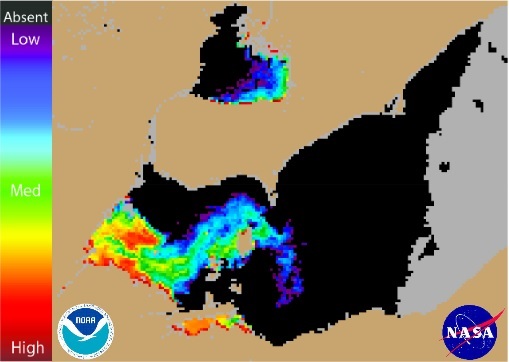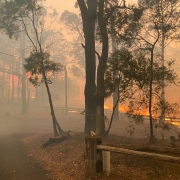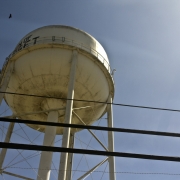Toledo Residents Told Water Is Safe
Toxin is below detectable levels in region’s drinking water
By Codi Kozacek
Circle of Blue
More than 400,000 residents in the Toledo area were given the go ahead this morning to resume drinking the city’s water after the presence of algal toxins prompted a “Do Not Drink” advisory over the weekend. Levels of the toxin are declining in water drawn from Lake Erie, and are below the safety threshold in treated drinking water, according to tests conducted by the Environmental Protection Agency and area water plants.
“Laboratory analyses of samples collected at the Collins Park Water Treatment Plant and throughout the distribution system indicate that contaminants have been consistently below the drinking water advisory threshold,” Ohio EPA Director Craig Butler wrote in a letter to Toledo’s mayor.
The Ohio EPA’s test results are expected to be released to the public this evening following a city council meeting. Test results from area water treatment plants, however, indicate that levels of the toxin, Microcystin, are no longer detectable in treated water.
“So far, the finished water of all the samples tested below detection.”
–Dough Wagner
Superintendent of Water Treatment, Oregon, Ohio
“So far the finished water of all the samples tested below detection,” Doug Wagner, Superintendent of Water Treatment in neighboring Oregon, Ohio, told Circle of Blue. “Even levels of the toxin in the raw water have dropped quite a bit over the past few days.”
Results from tests of raw water—water taken from Lake Erie that has not been treated —show toxin levels at 10 parts per billion in Oregon, Wagner said. Levels are 0.66 parts per billion in Ottawa County, 8.08 parts per billion in Carroll Township, 0.41 parts per billion in Sandusky, and 1.26 parts per billion in Monroe, Mich. Levels in the finished, or treated, drinking water of all the above communities are non-detectable, meaning they are below 0.3 parts per billion. The allowable level for safe drinking water is 1 part per billion, according to the World Health Organization.
The Oregon plant is completely separate from the City of Toledo’s Collins Park Water Treatment Plant, and did not have problems with its drinking water this weekend. Wagner does not have official information regarding actions at the Collins Park plant that made the water safe, but he said it is likely plant operators increased their chemical dosage. Drawing in a smaller volume of water from the lake, which allows the water more time in contact with the treatment chemicals, may have also been a factor.
The size of the current toxic algal bloom and levels of Microcystin in Lake Erie are not out of line with past summers, according to Wagner and scientists who study the blooms. “It was about average for this time of year,” Wagner said. “Actually, we have seen levels higher than that in the past.”
The reason Toledo fell victim to the bloom, therefore, is still unknown.
“We’ll probably never know to be honest with you; that’s why we test,” Wagner said.
“The microcystis bloom has intensified since last Thursday.”
–NOAA
Harmful Algal Bloom Bulletin
Testing for Microcystin is not mandatory for water treatment plants, but Ohio communities have recently started testing for it anyway due to the large algal blooms. Testing at the Oregon plant, which also processes samples from several surrounding water plants — not including Toledo — was conducted once a week prior to Saturday’s incident. Testing three days a week was to begin this week, but Wagner said he will likely test every day this week to make sure there are no problems.
Satellite images from the National Oceanic and Atmospheric Administration show that the toxic algal bloom in Lake Erie continues to expand.
“The microcystis bloom has intensified since last Thursday, and the area covered by medium to high concentrations has increased,” states the latest NOAA bulletin. “Calm winds have allowed the bloom to concentrate near surface; patches of scum were present in the areas of high concentration. Today and Tuesday, expect slight northeast transport (away from the Maumee Bay area). However, this pattern will change and light southward transport is expected through the end of the week.”
Toledo residents who are concerned about residual toxins in their water can flush their home water systems following directions from the Toledo-Lucas County Health Department. However, the city said this was not necessary for residents who had used their water over the weekend.
A news correspondent for Circle of Blue based out of Hawaii. She writes The Stream, Circle of Blue’s daily digest of international water news trends. Her interests include food security, ecology and the Great Lakes.
Contact Codi Kozacek













Leave a Reply
Want to join the discussion?Feel free to contribute!